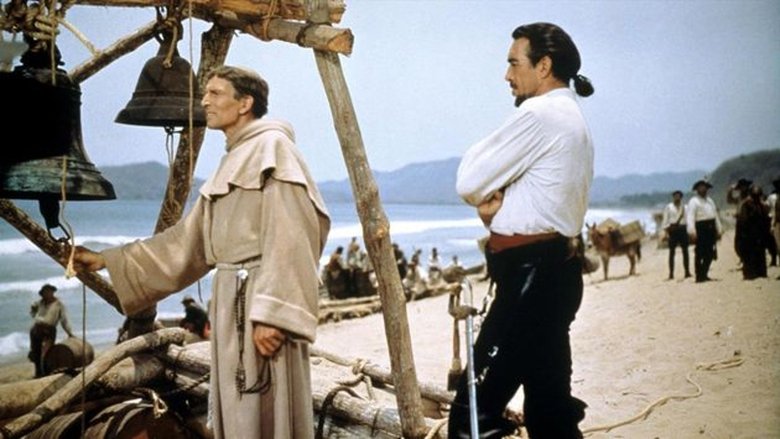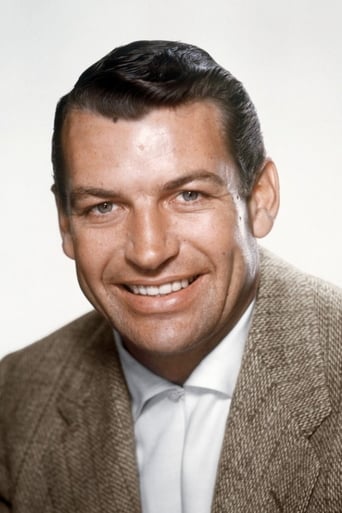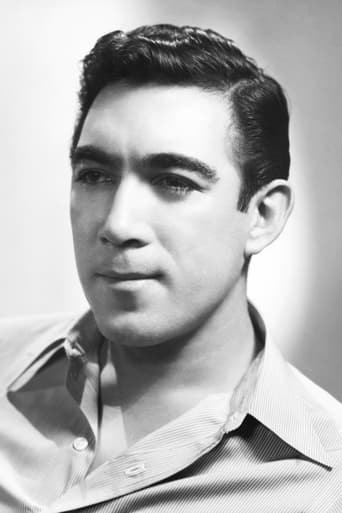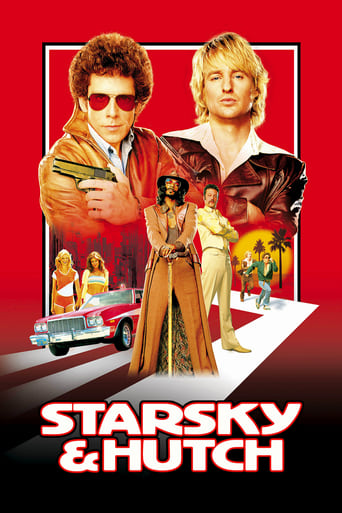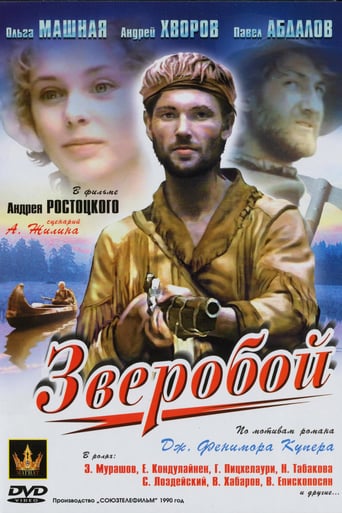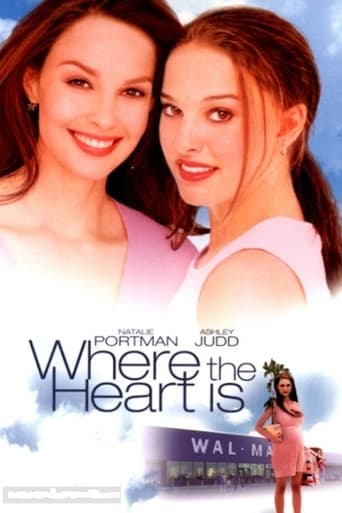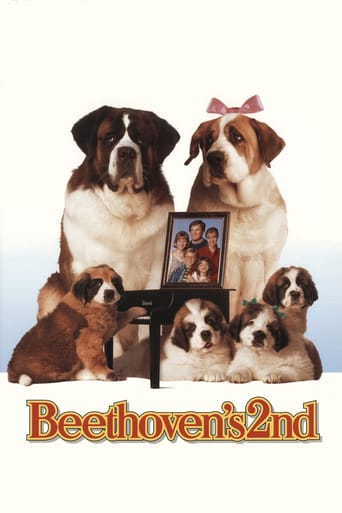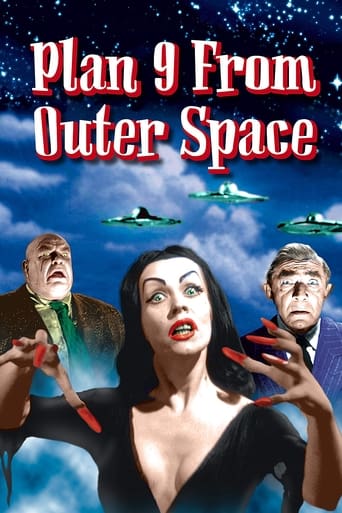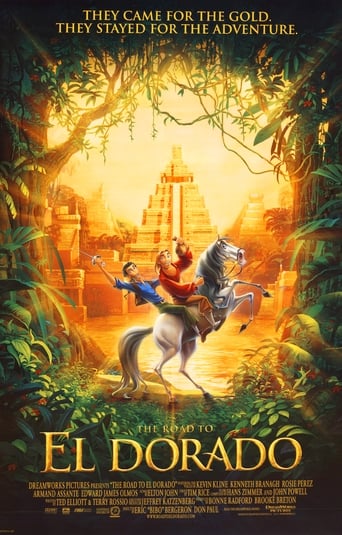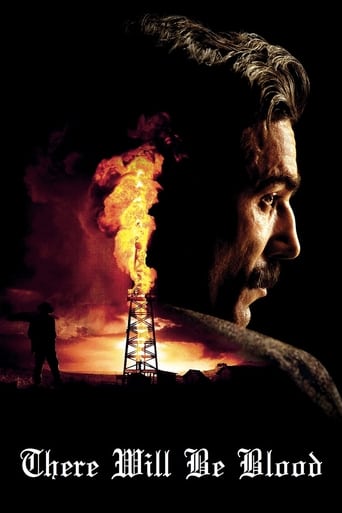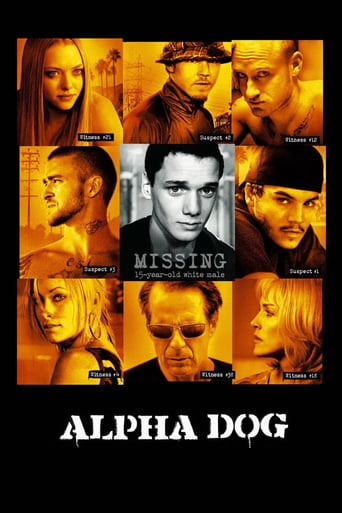Seven Cities of Gold (1955)
In 1769, a Spanish expedition to California seeks to conquer the land and discover its famed gold treasures while missionaries aim to gain new converts and establish a network of Catholic missions.
Watch Trailer
Free Trial Channels
Cast


Similar titles
Reviews
Far from Perfect, Far from Terrible
Great example of an old-fashioned, pure-at-heart escapist event movie that doesn't pretend to be anything that it's not and has boat loads of fun being its own ludicrous self.
Each character in this movie — down to the smallest one — is an individual rather than a type, prone to spontaneous changes of mood and sometimes amusing outbursts of pettiness or ill humor.
This is a dark and sometimes deeply uncomfortable drama
The film ends with Franciscan Father Serra(Michael Rennie) ringing a set of bells that has just arrived from the awaited San Antonio, thus negating the planned abandonment of the primitive initial Spanish settlement in Upper California, at San Diego, due to lack of supplies and reinforcements. He's ringing them for joy and as a demonstration of their hoped for use in calling converted Native Americans(NAs) to prayer. However, they might have been rung to commemorate all those Spaniards who died in this initial expedition into the unknown of Upper California, and to all those NAs in CA who would die from introduced diseases and mistreatment by the Spanish, and to those Spanish who would die at the hands of those many NAs in this region who wanted the Spanish to leave.I hate the title and the implication that this expedition was mostly about looking for gold to steal from the CA natives. Historically, it was motivated by the fear of King Carlos III that some other European power would soon claim this territory before the Spanish got around to establishing some sort of presence there. The 'Seven Cities of Gold' was, of course, a fable, originating from NAs 2 centuries before, that Coronado wasted his time chasing. Of course, the present expedition was an equal failure in this respect. The opening narration suggests that this film is also the story of the Spanish 'conquest' of CA. Again, it's not. It's merely the story of the founding of the first Spanish mission in Upper CA, which would be burned to the ground within a year by NAs, to be rebuilt.The character Captain Portola(Anthony Quinn), Father Serra, and Graves, are based on those historical persons who were most instrumental in planning and executing this venture. The incident where Portola initially meets Serra in a village, and offers a declined invitation to ride to Mexico City, is based on the historical Serra insisting on walking from Vera Cruz to Mexico city, upon his arrival from Spain. As dramatized, he also walked the whole way on the present expedition. His long-term limp and problem with a snake bite-infected leg is historically true, as is the episode in which it much improved after a muleteer used his traditional treatment for mule leg wounds. Serra and others did stay at the hastily built mission at San Diego Bay, while Portola took the others northward, with the idea of establishing another mission in Monterrey Bay. He didn't find this bay, historically, because of heavy fog, continued north , and made the much more significant discovery of San Francisco Bay. Strangely, this discovery isn't acknowledged in the film until the very end!The main character of Jose Mendoza(Richard Egan), as Portola's second in command, is fictional, seemingly serving mainly to take part in the tragic incident with the NA princess Ula(Rita Moreno). This reminds me of the incident in 'Hudson Bay', in which Radisson orders the execution of a member of the British royal family, who broke his rule against providing the NAs with liquor, resulting in the death of one. The difference is that Mendoza volunteers his punishment by the Native Americans, who tear his heart out, in Aztec fashion. Or perhaps the idea was that his 'crime' involved matters of the 'heart'. The way it's presented, Ula would seem the more guilty one, as the clear instigator of a marriage proposal with the objecting Mendoza. Nonetheless, her tribe doesn't see it that way, so Mendoza has to 'bite the bullet' to avoid a massacre. Odd that Egan is given first billing, when his character is clearly much less important than those of Quinn and Rennie, and he hardly makes a convincing-looking Spaniard! There's the strange episode where Serra wanders off to examine some plants, and Mendoza comes looking for him. They get lost in a sand storm after scaring off some NAs, then see a cabin and enter to find a man, woman and young child. They fall asleep and awake out in the bush after the storm. Mendosa reports this as a dream. But Serra says it wasn't a dream, implying it was a miracle....Previously, Serra seemingly saved the expedition by merely offering strings of beads to a hostile group of NAs: another apparent miracle. I guess the point is that, through Serra's faith, God will insure the success of this mission.Just before the expedition began, Serra gives a speech in which he predicts that the soldiers will try to steal the gold and other valuables of the NAs, then kill or enslave them to further enrich themselves, as past expeditions of this sort had often done. In fact, many of the missions Serra founded would decimate the NAs through disease dissemination and often render them virtual slaves. The change in policy of the new Spanish king from supporting the Jesuits as the advance guard of Spanish culture in northern Mexico and California, to replacing them with Franciscans and military-civilian colonists spelled the death knell for the many NA tribes in CA. The screenplay makes no mention of this critical change in Spanish policy.Not available on DVD, I caught it on the Fox channel. Filmed in cinemascope, mostly in Mexico.
20th Century Fox's SEVEN CITIES OF GOLD (1955) is a handsome looking colourful adventure story set in early California in 1769. Yet it has been pilloried by some for not being more than it is. A pity really, for it is quite an enjoyable picture with great atmosphere nicely played by a committed cast and directed with good attention to detail by Robert D. Webb. This was another elaborate fifties Fox production photographed in beautiful Cinemascope and Delux color by the brilliant Lucian Ballard. It was produced for the studio by Robert Webb & Barbara McLean and was expertly written for the screen by Richard L. Breen and John C. Higgins from a novel by Isabelle Ziegler.A marvellous sense of time and place is established from the beginning as we follow the procession of the mighty Spanish Conquistators under Captain Portola (Anthony Quinn) in the quest for the famous seven deposits of gold the Indians had left behind. Accompanying the army is Father Junipero Serra (Michael Rennie) the revered Jesuit monk who founded the missions of San Diego and was responsible for making peace with the Diegueno Indians. One of Portola's young officers Jose Mendoza (Richard Egan) falls for the charms of a beautiful Indian girl Ula (Rita Moreno) and begins an affair with her. But when he tells her he cannot take her back with him she becomes offended, flees from him in a rage and accidentally falls to her death from a cliff top. The erstwhile peaceful Indians now want blood and vow to attack the Spanish stronghold unless Jose is handed over to them. At first Captain Portola will not adhere to the Indian demand but later Jose (just like Jeff Chandler's character in TWO FLAGS WEST) to allay any fear of an attack, sacrifices himself and to the ominous and incessant beat of the Indian war drums walks out of the fort gates to his preordained fate. The sequence is deeply moving and heartfelt!Performances are generally good throughout with Rennie being a standout in his best role since "The Day The Earth Stood Still" (1951). As the zealous Father Serra he is sincere and convincing. Good too is Richard Egan as the ill-fated Jose. A likable actor - Egan never got his fair dues for his screen efforts (He stole the acting honours from everyone around him in "Untamed" the same year). But the most disappointing bit of casting in SEVEN CITIES OF GOLD has to be Anthony Quinn. For an actor who has second billing in such a big production his part is not only poorly written but it is under written. He is hardly in the picture at all and when he does make an appearance his presence is merely perfunctory. Any of a dozen Hollywood bit players could well have played his part.One of the most stirring aspects of the picture is the extraordinary music by Hugo Friedhofer. A vital and arresting score full of appropriate Spanish, Mexican and Latin rhythms. The composer's vast knowledge of this music shines through. The main title is a broad passionate Granada-like Spanish cue with blazing trumpet that points up the all-conquering Conquistadors and is heard in different guises (including a spirited march variation) as the picture progresses. There is a religious theme for Father Serra as well as some wonderful mariachi cues and indigenous folk songs. One such song 'Senorita Carmelita' is sung by the troopers (including Egan) at an open-air feast. It is infectious and totally irresistible! SEVEN CITIES OF GOLD is Friedhofer's best and most enjoyable adventure score!SEVEN CITIES OF GOLD is a much better movie than its reputation reveals and deserves reappraisal for (1) Its authentic historical setting (How many movies besides "Captain From Castile" can you think of that covers the same period in American history?). (2) Its fine performances. (3) Its splendid Cinemascope/Color cinematography and (4) its rollicking musical score.
There's a mixture of interesting drama and camp in this story of Spanish conquest over California Native Americans. Egan and Quinn play Spanish officers who are on the lookout for the title cities, but who are saddled with priest Rennie who is along for the ride to build a mission. The men don't see eye to eye on how to handle the "Indian problem" and this lends itself to some nice discussion of and demonstration of the tactics used to control them. Eventually, the human elements of both the "whites" and the Indians begin to blend, but not without difficulty and eventually with great sacrifice. Contemporary audiences will be surprised that Egan is top-billed over Quinn and has the more substantial role. Even though Quinn is the authority figure in charge, the story is more about Egan. Quinn is believable as a Spaniard (as he was as so many other nationalities in his career!), but Egan is about as Spanish as William Bendix!! His flat American accent and obviously non-Latin coloring create a sensory paradox when he is onscreen. Rennie is also far from Spanish, but manages to pull it off better with a less distinct accent. All three male leads do a decent enough job acting-wise, but never really catch fire. The only other performers of note are Hunter and Moreno as natives. Hunter gives his usual impassioned performance (unfortunately covered in war paint most of the time) in one of many roles that were beneath his ability. Moreno gets very little to do, but tries to inject some emotion into the proceedings. While the Cinemascope lens captures some awesomely beautiful scenery, it also keeps the actors at a distance. Time and again, dramatic and emotional moments are played in practically long shots! There are very few close-ups in the movie. The two most beautiful cast members (Hunter and Moreno) get nothing closer than a two-shot. This puts a sort of wall up that detracts from the emotional investment in the story. Then there's the camp factor. It begins immediately with a hilarious voice-over that exclaims how accurate the story is and that the only change that was made is that the "words will be set in English." PLEASE! Moreno and Hunter, while compelling performers, are given ridiculous wigs and clothing to wear. Attempts at humor, handled adeptly by Hunter, seem to add a corny aspect to the otherwise serious film. There's a bizarre interlude with Egan and Rennie finding shelter in a sandstorm. The sword-and-sandal crowd may find themselves trying to spot Egan's winky as it veers to the left in his clingy green trousers (with oh-so-festive red cummerbund.) In all, it's a pretty, sometimes engaging movie, but rather silly at times and lacking any real emotional resonance.
Done on grand scale, this is the tale of Father Junipero Serra and the founding of the California Missions, in particular, the first at San Diego. Rennie, Quinn, and Egan turn in good performances and the story moves along quite well, even though history is played with fast and loose in this treatment. Of particular interest is the style and treatment of the Indians encountered by the mercenaries and the priest-there is much more realism than most films of this era. The action scenes are done well and the obvious, but inevitable conclusion makes the point. A good watch.


